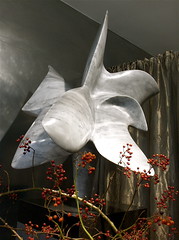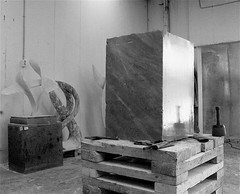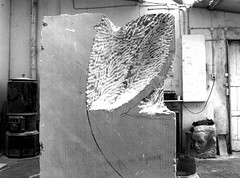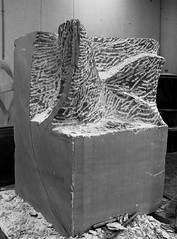Like a block of stone
I recently finished writing and rewriting and writing again the essays for several scholarship applications. It is probably a good thing, but that was the most time and effort I have ever spent writing three pages of text. I went through several revisions of each essay, had the wonderful Fulbright advisers at George Mason read and reread the essays, and even went to the vastly underused (by me anyways) campus writing center.
Roughing it out
My personal essay started out as being a little too personal, as in informal. At the writing center, I also realized that the opening paragraph was too negative. I wanted to show how as a child I deeply disliked school. In first and second grades, in order to avoid going to school I would often hide in the backyard or somewhere in the house, and generally make a big stink every morning. One time my mom drove me to school (two blocks away) and when we got there I jumped out of the car and ran off into the neighborhood for an hour or so. The rest of elementary school through high school was better; I did not put up as much of a stink, but I still did not like school. I was convinced that I would never have anything to do with school again once I graduated from high school. That’s how my essay started out, a general idea of what I wanted to write about. Like a big block of stone that I hacked away at.
Adding Detail
I wanted to convey all of that in a couple of sentences, all to point to the irony that I am now pursuing the highest degree one can attain in school, and that I am still in school 16 years later, with another three years to go (I did have three years off in there, though). But the gal at the writing center was right. It was a bit too negative. Instead I focused on my strengths as an historian and my technical skills. This worked out much better, since this is one of the major focuses of the dissertation. Through this constant revision and insight from others my project started to take shape.
Finishing

One of the other really neat things about spending so much effort on an essay (especially one about my dissertation research) is that I was really able to focus my arguments and tighten up my thoughts on what I hope to accomplish. Through this process of constant revision I realized three things that I wanted to focus on in my dissertation: the story of the underground dispersal projects; how the projects are memorialized or not, and what that says about Vergangenheitsbewältigung; and an argument for the change in what is considered scholarship in the historical profession. Going through the constant revisions has changed my focus in some small ways from my original proposal in the dissertation prospectus, but that is to be expected. I feel that I now have a much more polished and obtainable goal.
All images courtesy of Akbar Simonse, who photographed Mark Rietmeijer sculpture. http://www.flickr.com/photos/simeon_barkas/sets/72157600224554402/














